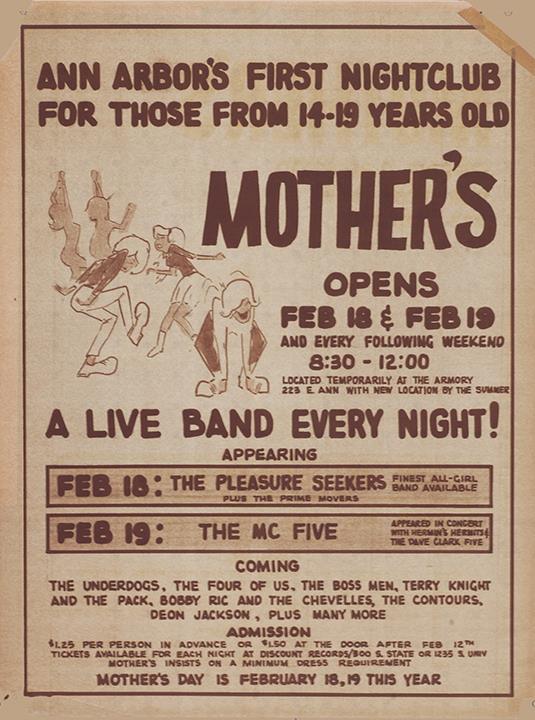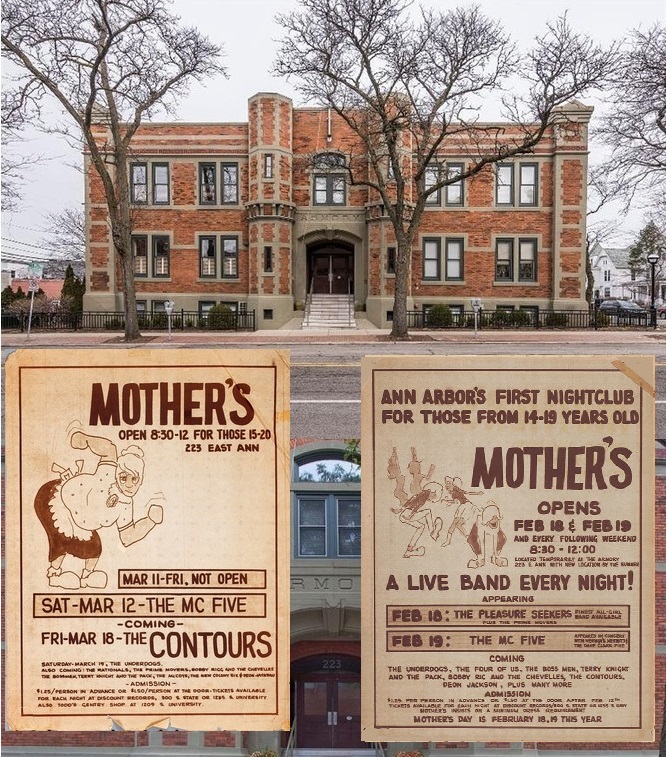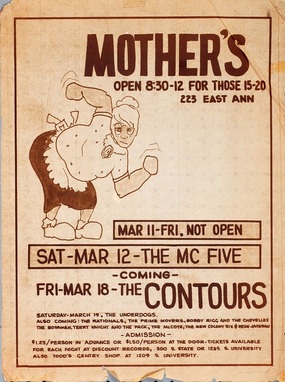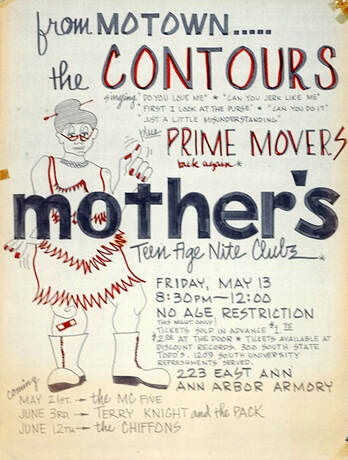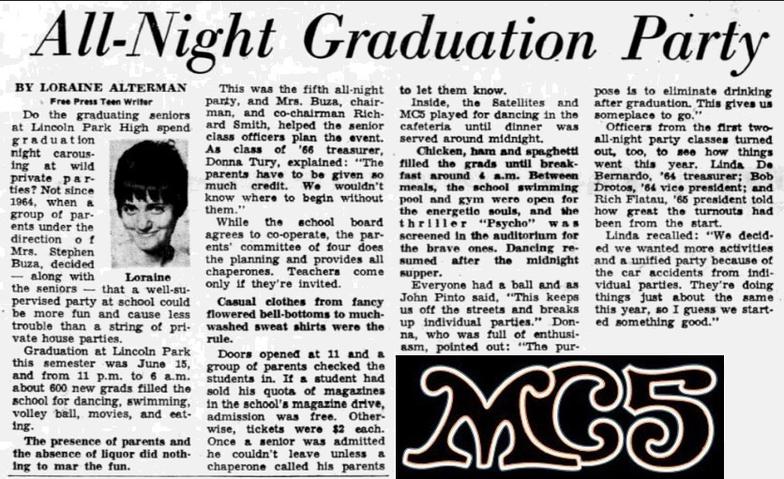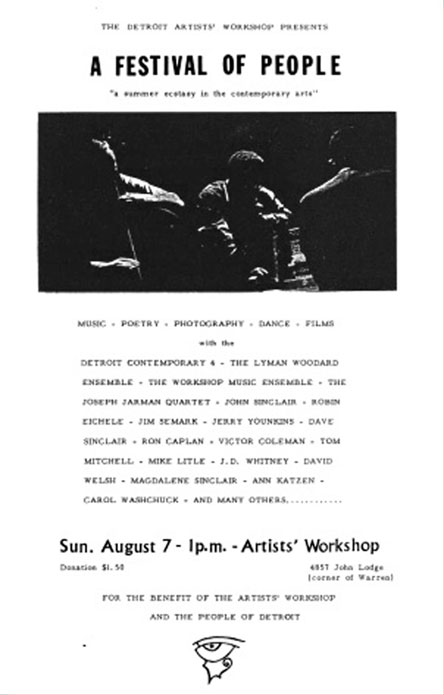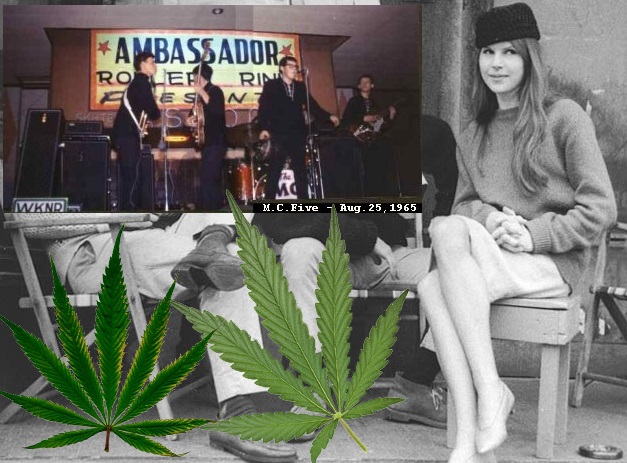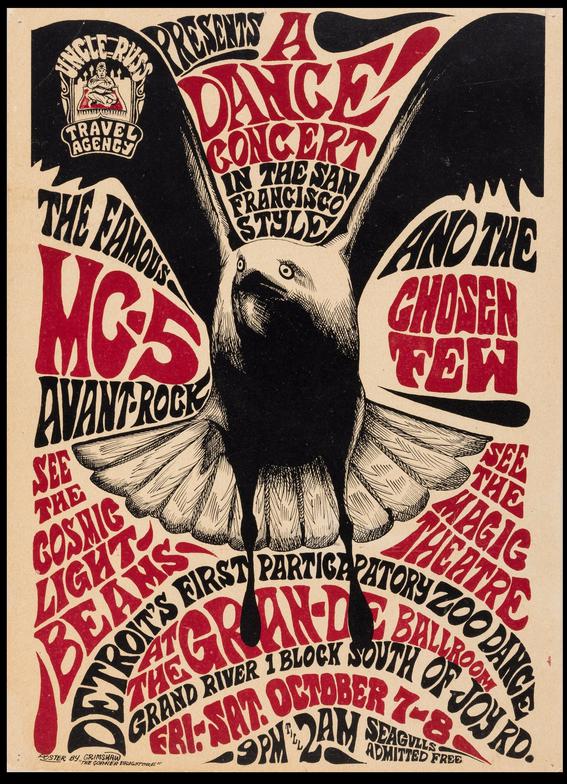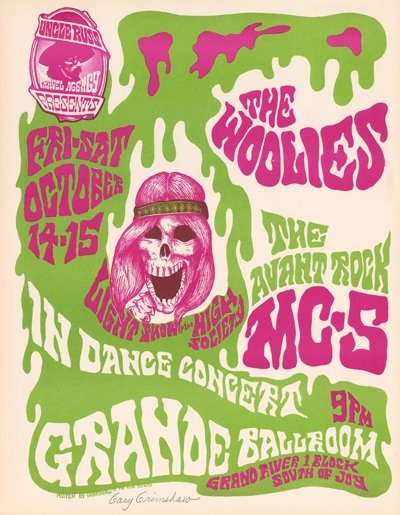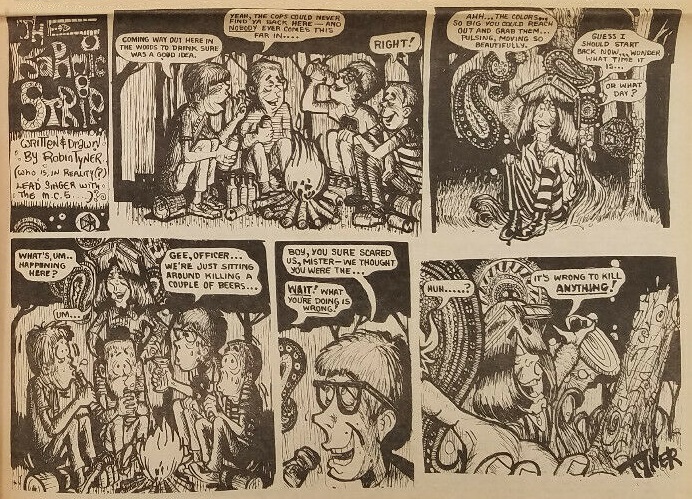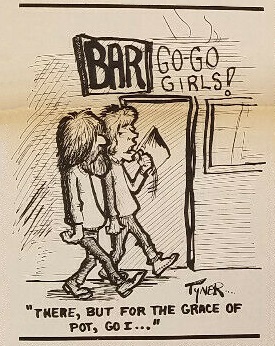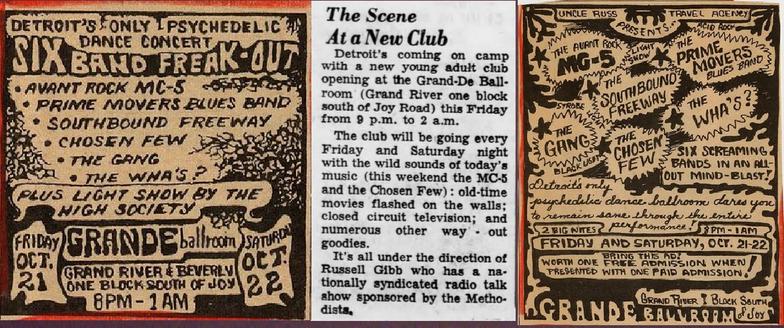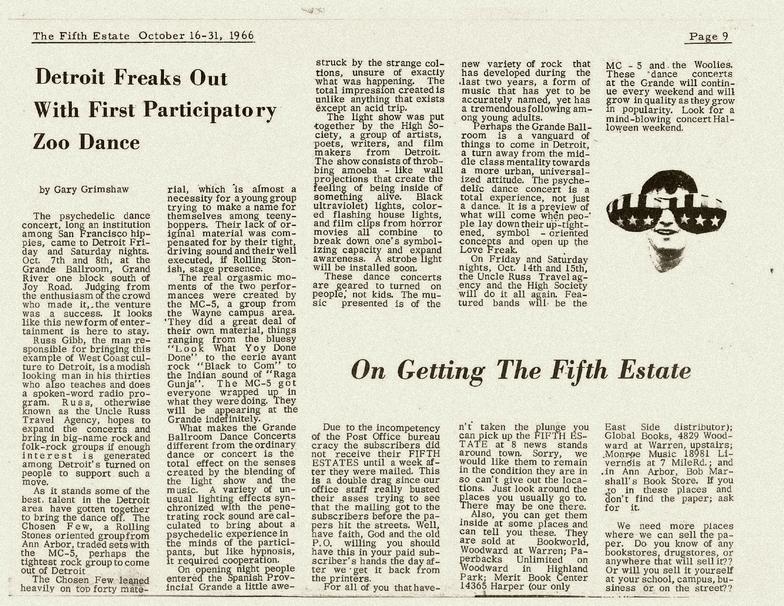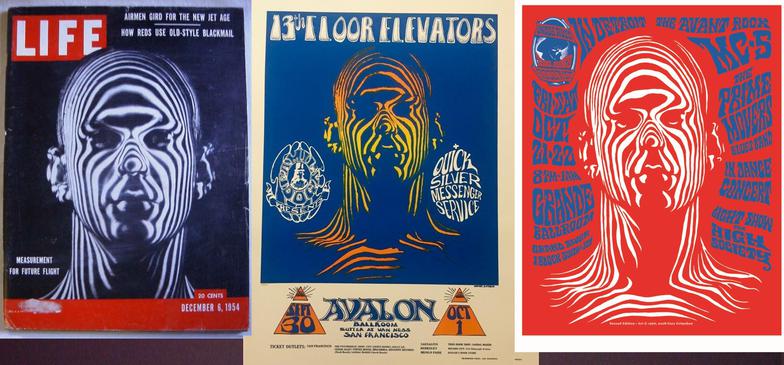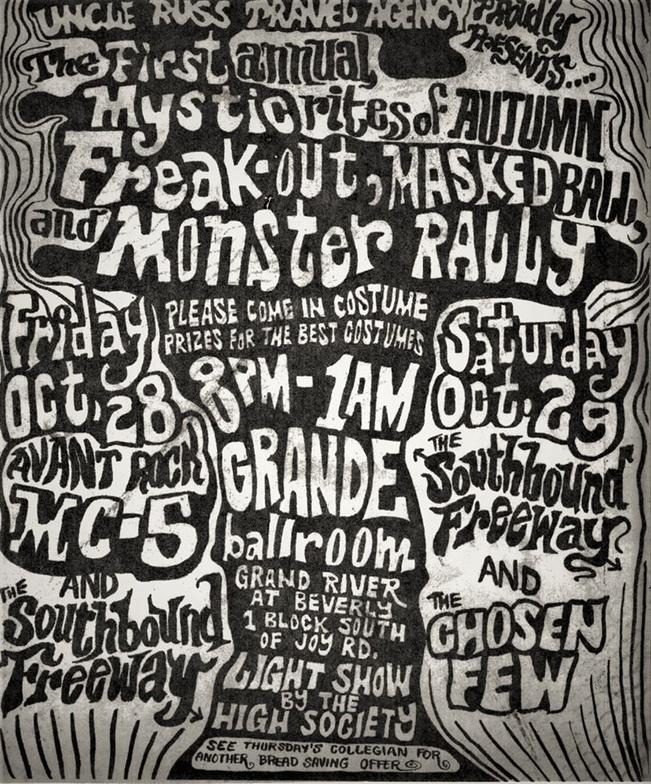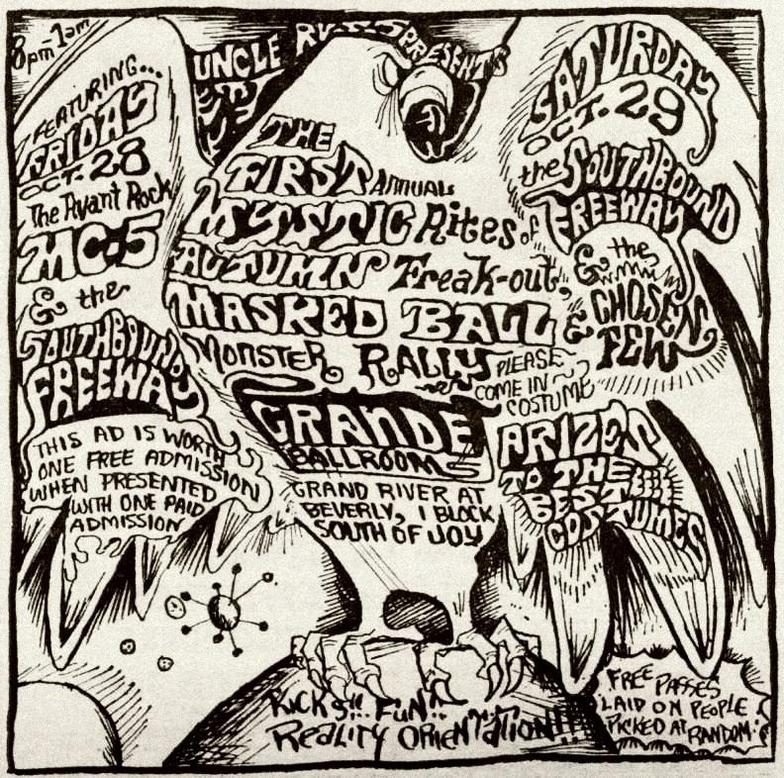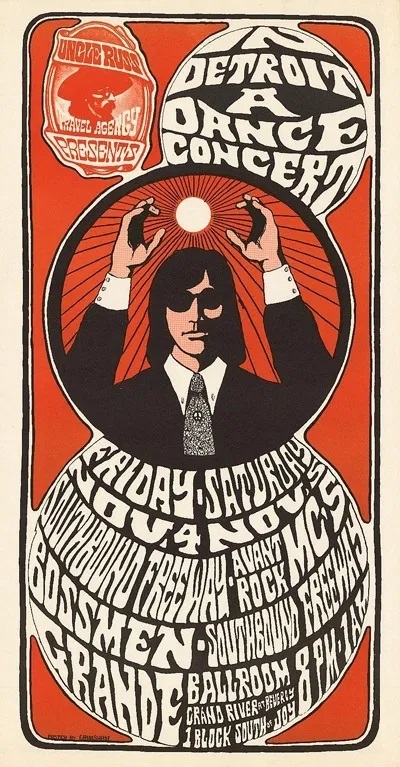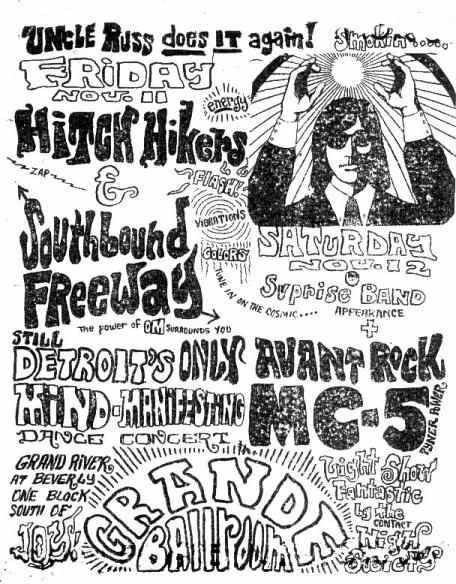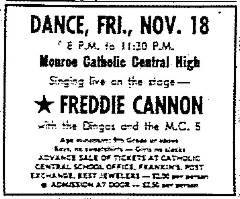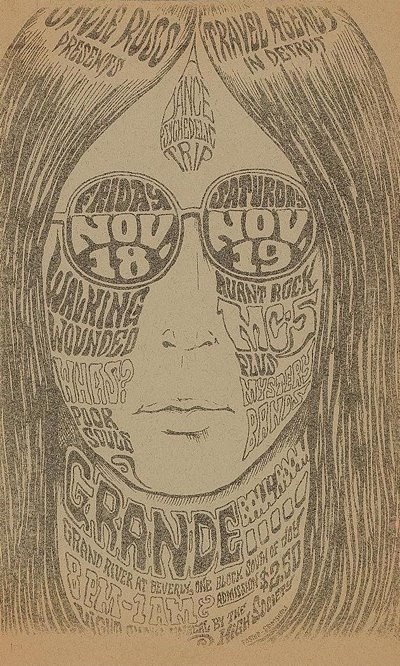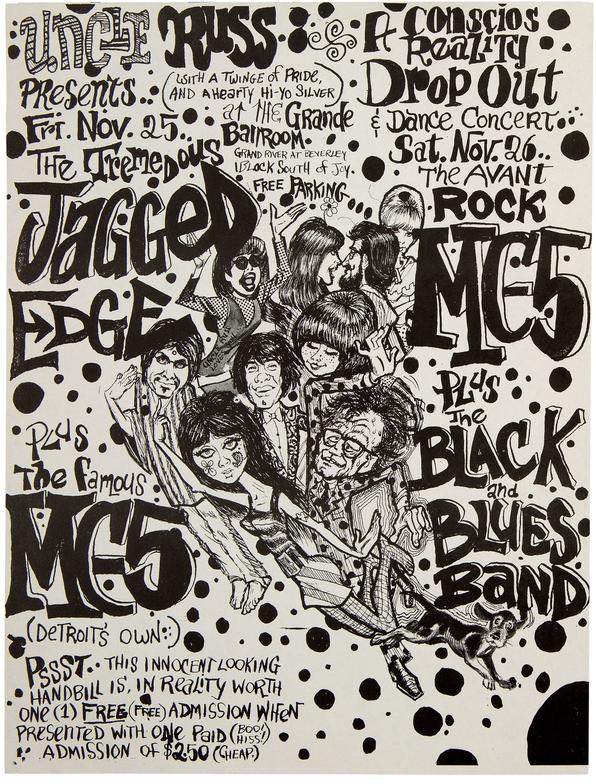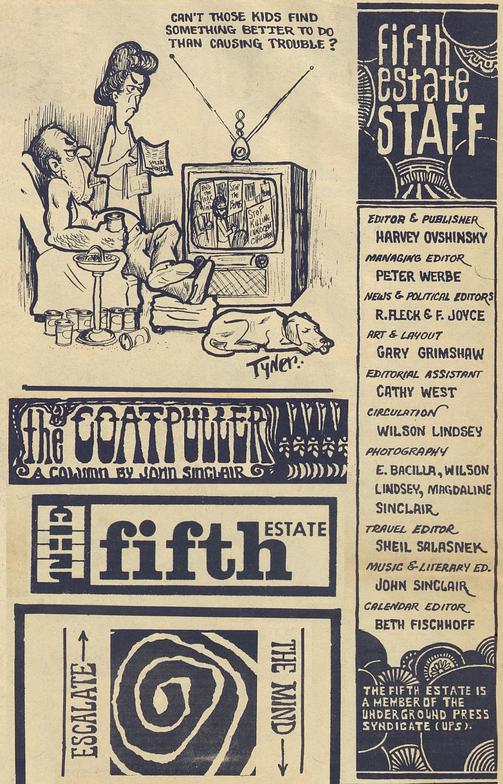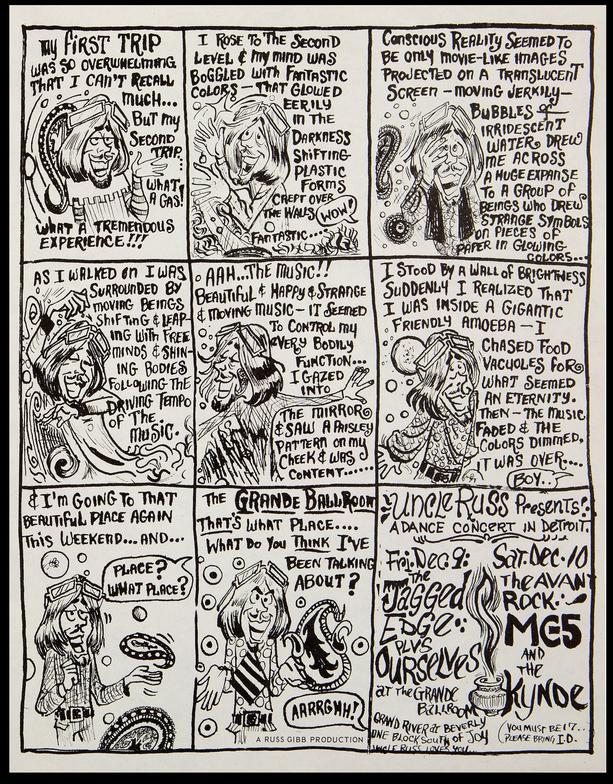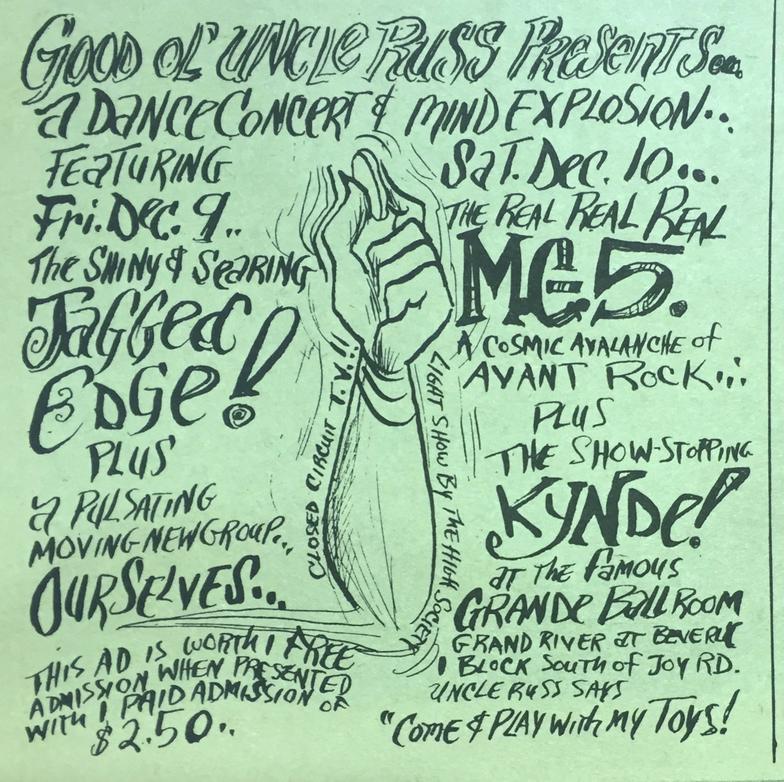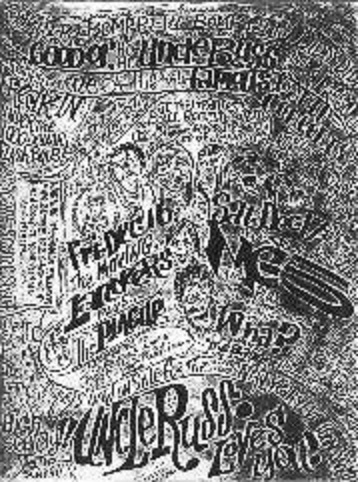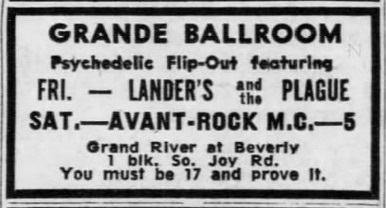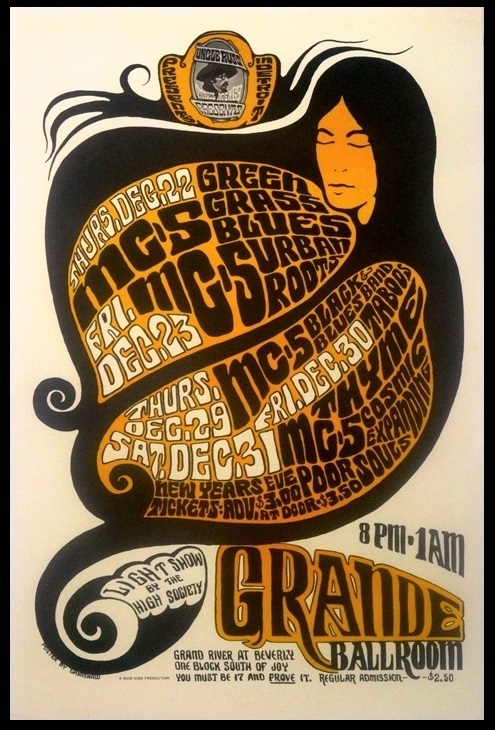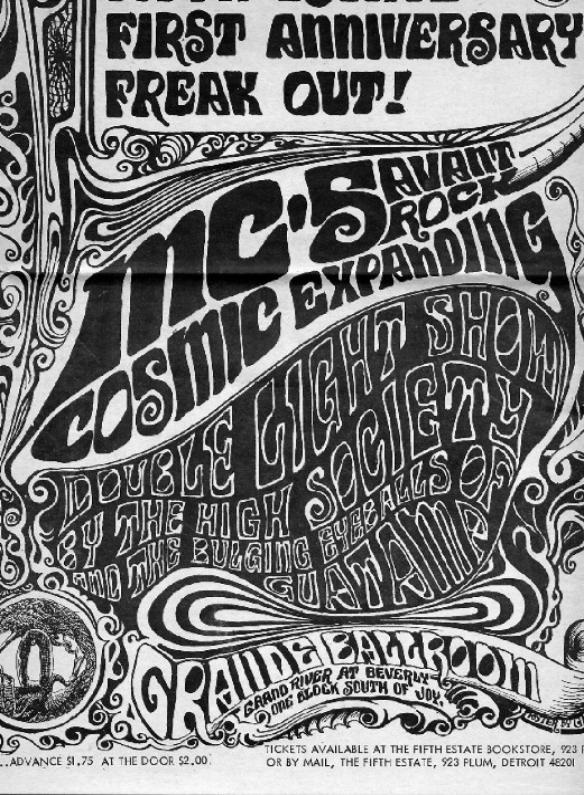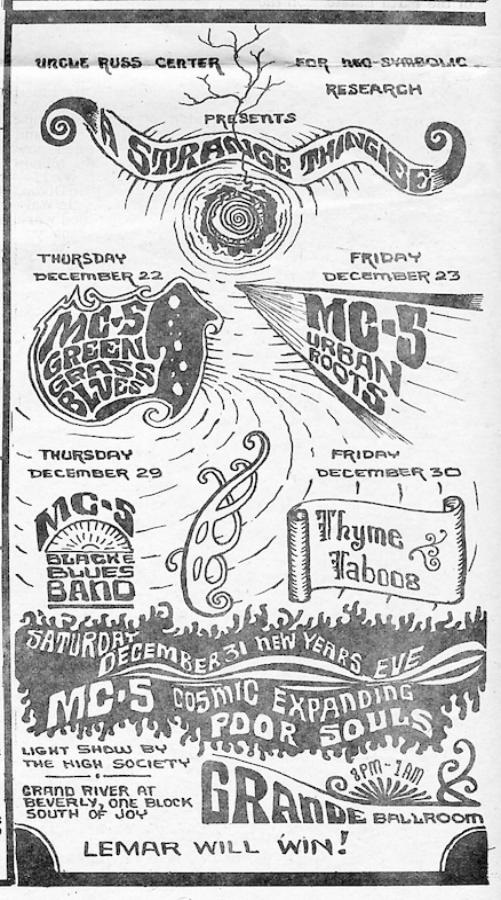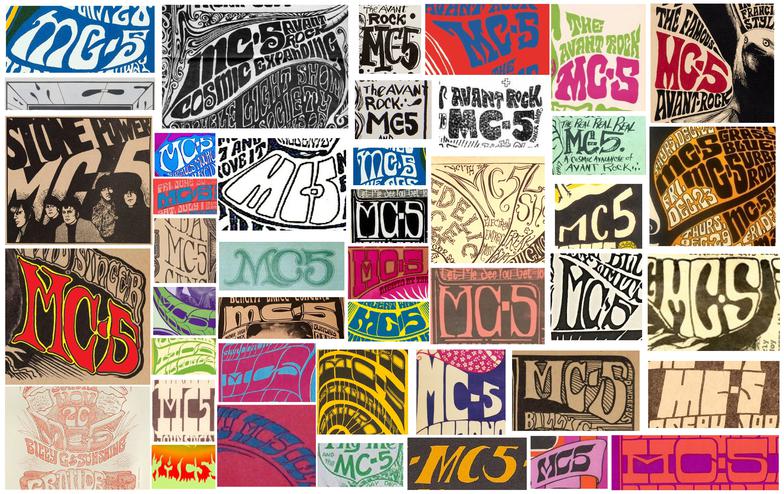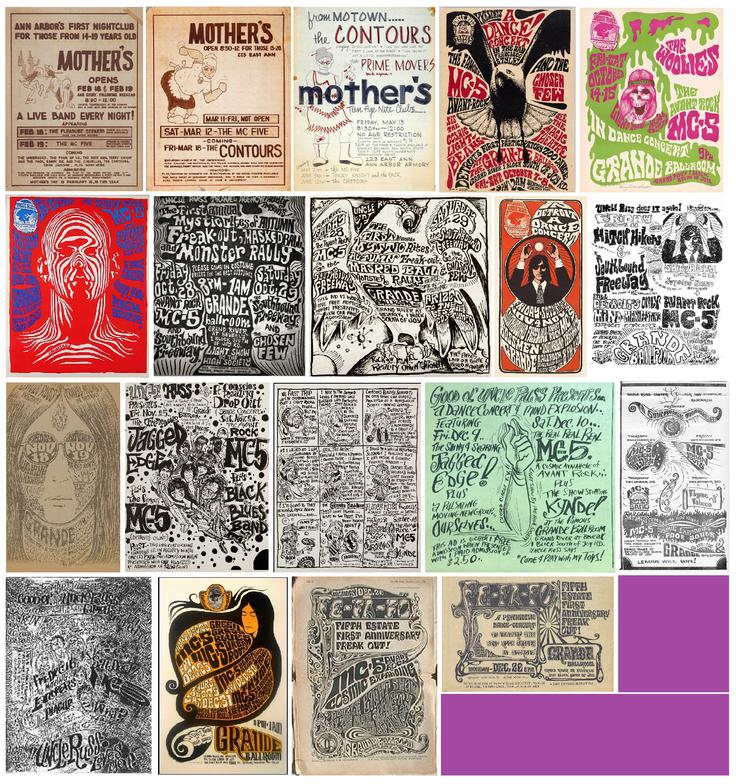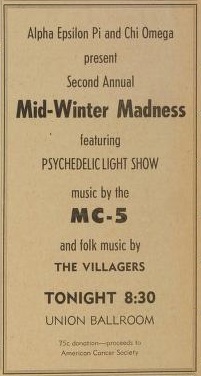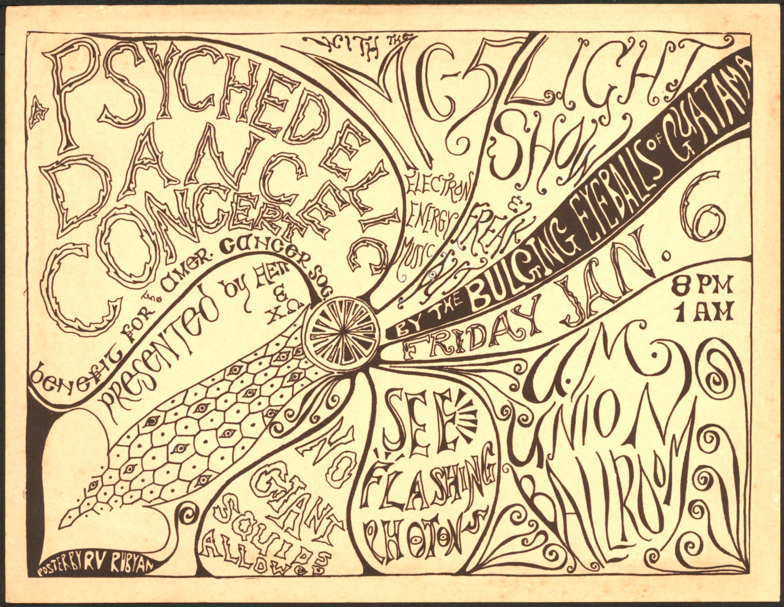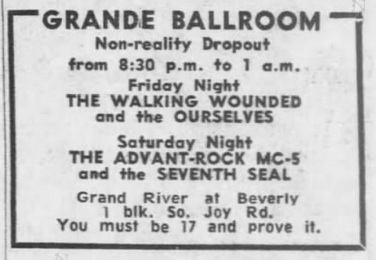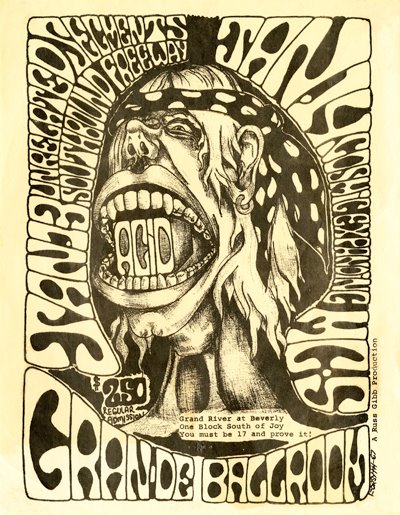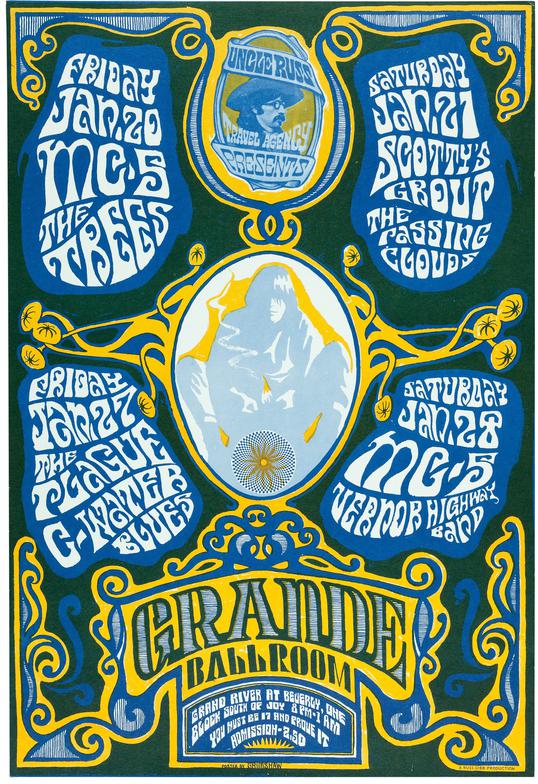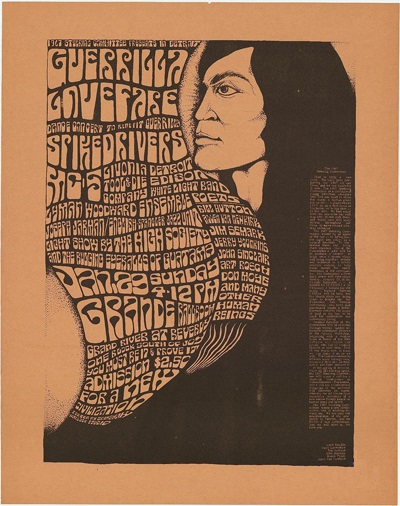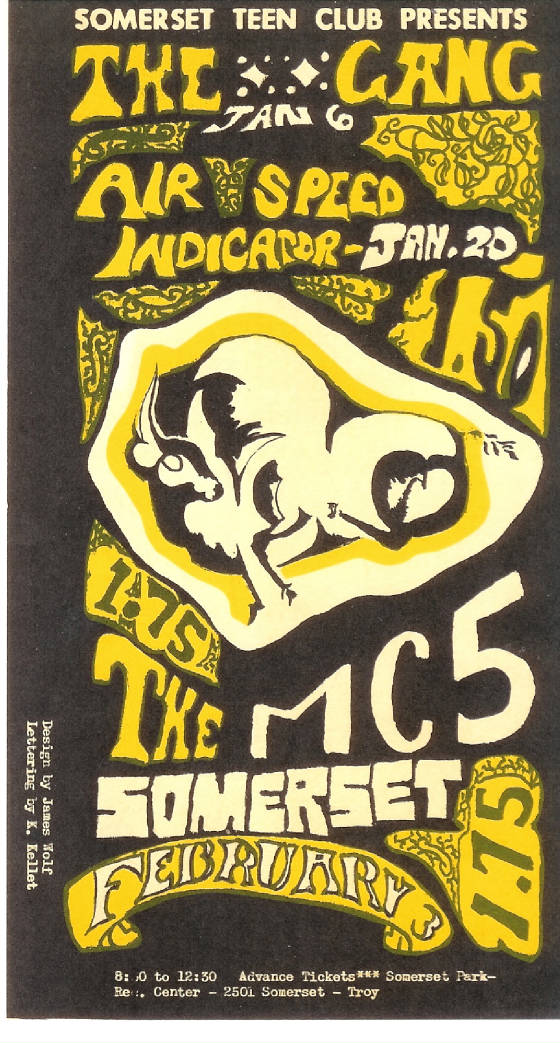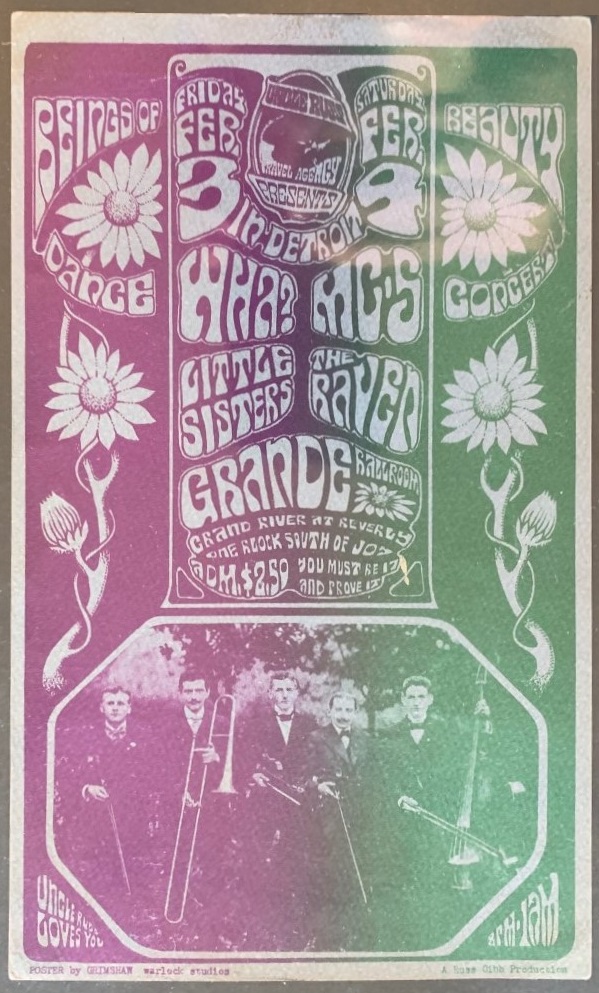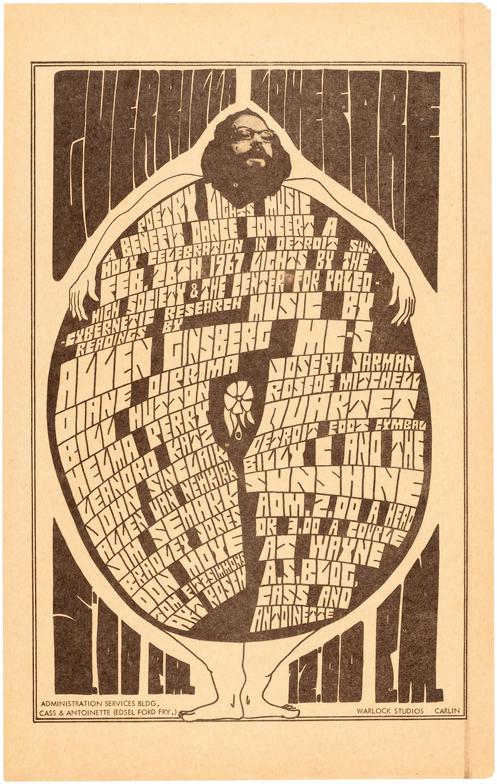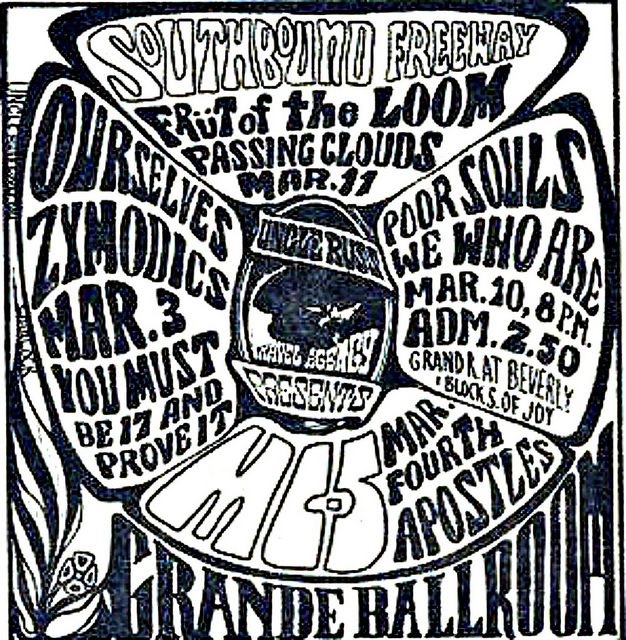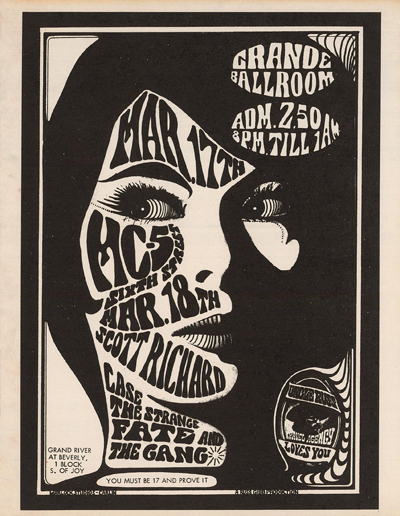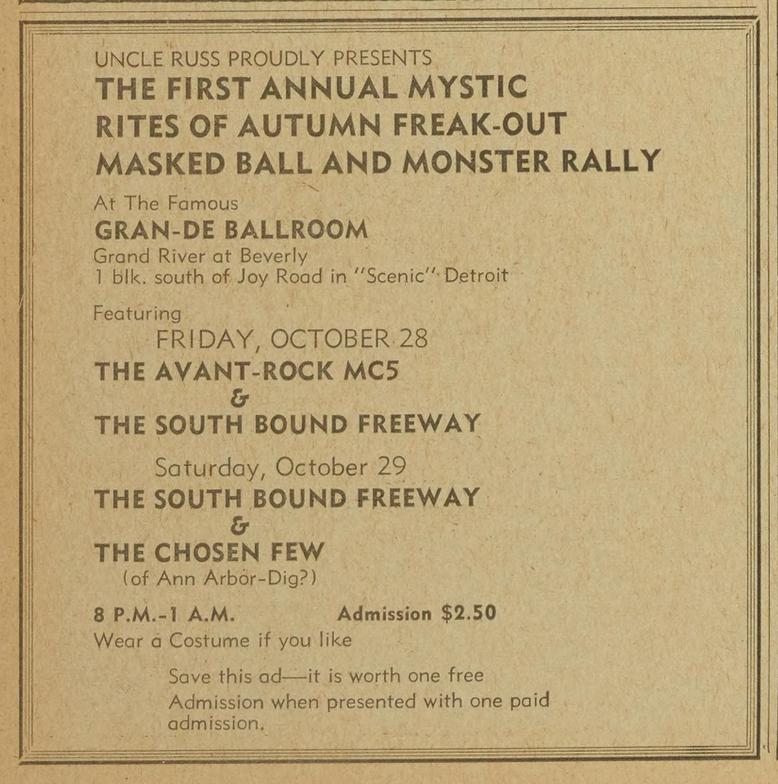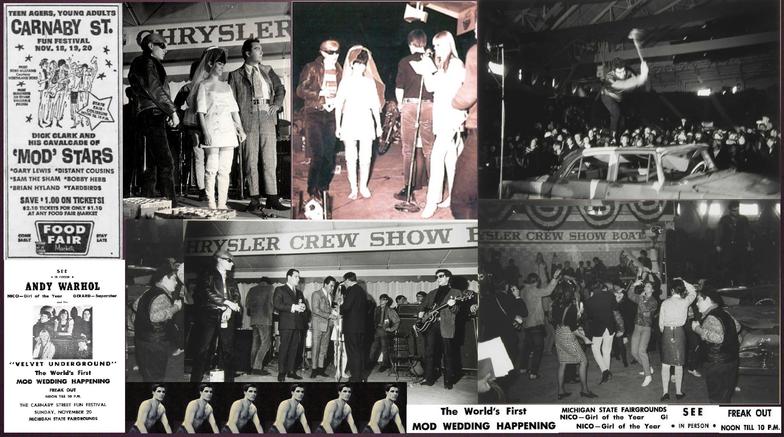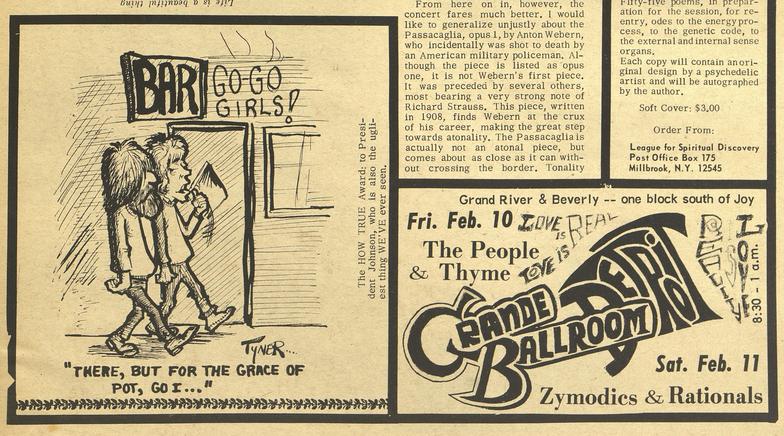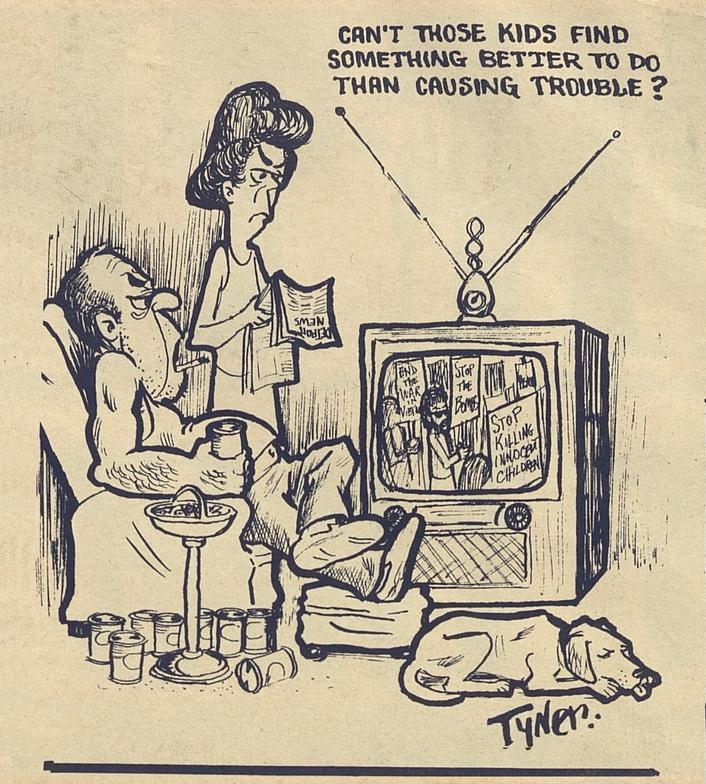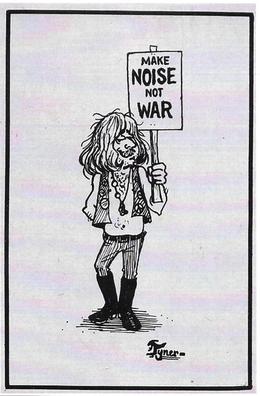Splatt Gallery
Double click here to add text.
Splatt Gallery's History of Michigan Music Posters
MC5
************************************************************
1966
Poster for the opening of Mother’s club in Ann Arbor, Michigan, February 18, 1966, with the Pleasure Seekers and the Prime Movers, and with the MC5 the following night, February 19, 1966. The band is listed as “The MC Five” and is touted for having opened for Herman’s Hermits and the Dave Clark Five (DCF yes, HH no).
Mothers was a teen club run out of the old armory on Ann Street in Ann Arbor. And look, they had show posters, great show posters, designed by an unknown person who had a consistent, distinctive style, even if Mother looked more like a grandmother.
Another great poster by for Mother’s in Ann Arbor, Michigan, with the second appearance by “The MC Five”, on March 12, 1966.
A fantastic poster for Mother’s in Ann Arbor, with the MC5 (still “MC Five”) making a third appearance at the club, on May 21, 1966.
A story by Detroit Free Press Teen Writer Loraine Alterman about an all-night graduation party at Lincoln Park High School on June 15, 1966 that featured a show by the MC5 and the Satellites.
John Sinclair was coming home, having served six months in prison for his second arrest for possession of marijuana, and the Detroit Artists Workshop threw a party, in their style, of poetry and jazz as detailed on this poster by Leni Sinclair. It was on this night, August 7, 1966 that the MC5, prodded by lead singer, Rob Tyner, who had a fanboy crush on the beatnik-cool Sinclair, worked up the nerve to appear at the party, instruments in hand, offering to play for the homecoming hero.
Sinclair kept putting them off all throughout the day of spoken word, bongos, interpretive dance, and free jazz. When the last of the poets wrapped up, around 2:00 am, the band got on stage and started jamming. By that time, Sinclair had already gone upstairs to bed and after three songs, his wife, Leni, came downstairs and pulled the plug.
After getting out of the joint, John Sinclair resumed writing his music column for The Fifth Estate newspaper that had been started by Harvey Ovshinsky and was being produced at the Detroit Artists Workshop. For his first return column, he decided to rail against rock and roll, “jive rock and rollers” unworthy to carry the artistic mantle of Sun Ra, John Coltrane, and Miles Davis.
Wayne Kramer, guitarist for the MC5, felt compelled to respond, so, in these pre-Twitter days, he wrote Sinclair a letter, “Hey man, you’re always talking about ‘the people’, we are the people”. A snail-mail Twitter war erupted via the US mail:
Sinclair: Rock and roll is for children
Kramer: We are the revolutionary youth
Sinclair: Rock musicians are untalented oafs
Kramer: The power of rock and roll is revolutionary
Sinclair: Jazz is the superior use of instruments
Kramer: Hey man, we’re hip to ‘Trane and Ra
Finally, the MC5 jumped into a car and headed over to the DAW to kick his ass. Sinclair met them outside, invited them in, smoked a joint and listened to some records and became “one of the guys”.
The MC5 – One of the Guys (1966)
https://www.youtube.com/watch?v=0PzhjyPtT7o
Russ Gibb made astonishingly quick progress when he returned from San Francisco in landing a rent-to-buy deal on the old Grande Ballroom. He contacted Harvey Ovshinsky at The Fifth Estate newspaper to ask about potential bands and Harvey referred him to the paper’s music editor, John Sinclair, who had recently become friendly with the MC5. Sinclair has said that he first saw the band performing at the Michigan State Fair which ran from August 26 through September 5, 1966. Soon after, Sinclair offered the band the use of space at the Detroit Artists Workshop for their practice sessions.
When Russ Gibb first met the band, at a rehearsal at the DAW, they were still in their mod, coats-and-ties fashion phase, but when he heard them play, he said they were EXACTLY what he was looking for. Plus, the band agreed to play for no pay at first, in exchange for being able to use the ballroom as their new rehearsal space.
In final preparations for the opening, Russ called Rob Tyner to ask if he knew anyone that could make a poster. Rob woke up a friend of his that was sleeping on his couch, named Gary Grimshaw, and told him, “Here, this is for you”.
Gary Grimshaw grew up in Lincoln Park, Michigan in a family of graphic artists, working at his uncle’s print shop in Dearborn and drawing all the time. He was the king of an “art gang” at his high school, which included friends Wayne Kramer and Rob (Tyner) Derminer, because he was the only one with a car and could transport them from the drab down-river area to the hip beatnik world near Wayne State University. After high school, Gary enlisted in the Navy and served in Vietnam, where his final tour of duty landed him in San Francisco to discover the scenes at The Fillmore and The Family Dog. He returned home to Detroit and crashed at his friend Rob’s house until something might come up.
The poster that Gary made for the opening weekend at The Grande Ballroom, October 7-8, 1966 is an enduring classic with lettering flowing effortlessly around the image of a seagull taking flight. The nickname “Uncle Russ” had already been bestowed on Russ Gibb, who was a good ten years older than everyone he had gathered around him, and the light-hearted “Uncle Russ Travel Agency” logo was a nod to the “Bill Graham Presents” titles on the Fillmore posters.
The MC5 are listed as "The Famous MC-5 Avant Rock".
The second weekend of the Grande Ballroom, October 14-15, 1966, and the second poster by Gary Grimshaw. It is also the premier of Grimshaw’s “Light Show by the High Society”.
Sharing the billing with the house band, the MC5, were The Woolies from Lansing, Michigan. The Woolies were actually the winner of the Vox Battle of the Bands at the state fairgrounds in our last post. First prize was a trip to Hollywood for a recording session where they cut a version of Bo Diddley’s “Who Do You Love” which became a regional hit.
A comic strip, called “The Karmic Strip” written and drawn by Robin Tyner, lead singer with the MC5, in the October 16, 1966 issue of the Fifth Estate newspaper in Detroit, Michigan.
Another cartoon by Rob Tyner, lead singer with the MC5, in the October 16, 1966 issue of the Fifth Estate newspaper in Detroit. It was reprinted in the February 6, 1967 issue of The Paper in East Lansing alongside an interesting ad for the Grande Ballroom.
The word was starting to get around. There had been a brief announcement in the newspapers before the opening, but the consensus is that only about 60 people attended the opening night at the Grande Ballroom. It is also said that attendance doubled the second night, but that’s still not much larger than a decent keg party.
For promoting the third weekend, October 21-22, 1966, a couple of illustrated ads appeared, believed to have been drawn by the band’s lead singer, Rob Tyner. The MC5 are listed as the “Avant Rock MC-5”, topping a six-band line-up with the Prime Movers, Southbound Freeway, Chosen Few, the Gang, and the Wha’s?
Not only did artist Gary Grimshaw create the first poster for the Grande Ballroom, but he also provided a first-hand account of the venue’s first weekend, in extensive detail, published in the October 16-30, 1966 issue of the Fifth Estate newspaper, titled “Detroit Freaks Out With First Participatory Zoo Dance”.
He describes the performances by the Chosen Few and MC5, the opening night audience, and details of the light show, which he co-created, humbly described as “put together by the High Society, a group of artists, poets, writers, and film makers from Detroit”.
He certainly clears up the question, once and for all. of whether the Chosen Few, or the Wha?, opened the first show, a question that still gets debated, but GARY WAS THERE, and for the five minutes or so that it takes to read his words, he is here again.
He describes the “orgasmic moments” of the MC5’s set with the songs “Look What You Done”, “Black To Comm”, and “Raga Gunja”.
He certainly clears up the question, once and for all. of whether the Chosen Few, or the Wha?, opened the first show, a question that still gets debated, but Gary was there and the correct answer is the Chosen Few, whose set is described as “tight driving sound and Rolling Stonish stage presence”.
Coincidently, both Stanley Mouse and Gary Grimshaw used a cover photo from the December 6, 1954 issue of LIFE magazine for their next posters. Mouse and Alton Kelley used it for the Family Dog’s 13th Floor Elevators shows Sept 30/Oct 1, 1966, and Grimshaw used it for his third poster for the third Grande Ballroom show three weeks later, October 21-22, 1966.
The MC5 and the Prime Movers from Ann Arbor performed both nights. This was only the second gig for the Prime Movers since drummer Iggy Osterberg had departed, replaced by Tom Ralston and soon after, by Jesse Crawford, future “Brother J.C.”, founder of Zenta “religion” and MC for the MC5.
Poster by MC5 lead singer Rob Tyner for Weekend #4 at the Grande Ballroom, October 28-29, 1966. It was Tyner’s first poster for the Grande, not counting the two ads for Weekend #3, there was no Gary Grimshaw poster for the fourth weekend.
The shows were billed as “The First Annual Mystic Rites of Autumn Freak-Out, Masked Ball and Monster Rally”. Attendees were urged to come in costume, with prizes for the best costumes. There was also a note to “see Thursday’s Collegian for another bread saving offer”.
The bands for the fourth weekend were the MC5 and Southbound Freeway on the first night, October 28, 1966, and with Southbound Freeway and the Chosen Few for the second night.
This ad for Weekend #4 at the Grande Ballroom (October 28-29, 1966) that doubles as a coupon (one free admission with one paid) which must be the “bread saving offer in the Collegian” mentioned on Rob Tyner’s poster. The ad artwork, also by MC5 lead singer Rob Tyner, is more artistic than his poster. “Rick’s Fun Reality Orientation” is an unknown reference. Also shown is a print ad from the Michigan Daily newspaper in Ann Arbor.
The fifth weekend at the Grande Ballroom, November 4-5, 1966, was promoted with Gary Grimshaw’s fourth poster and featured a band from Saginaw, Michigan called The Bossmen, featuring guitarist and singer, Dick Wagner.
The Bossmen opened for Southbound Freeway on the first night and Southbound Freeway opened for the MC5 on the second night, November 5, 1966.
For the sixth weekend at the Grande Ballroom, November 11-12, 1966, the poster looks hastily assembled, re-using Gary Grimshaw’s image from the week before with lettering attributed to Rob Tyner (counted as Tyner’s third poster). On Friday night, the bands were the Hitch Hikers soon to become Thyme) and Southbound Freeway and on Saturday, November 12, 1966, it was a “surprise band” with the MC5.
The text states “Still Detroit’s Only Mind-Manifesting Dance Concert”, with “The power of OM surrounds you” and “Tyner Power” sideways after “MC-5”.
The Hitch-Hikers were a band from Kalamazoo, Michigan, who soon after this show, enlisted bass player Al Wilmot from the Kalamazoo band, The Monuments, moved to Ann Arbor, signed on with Jeep Holland’s A-Square Records, and changed their name to The Thyme.
An appearance by the MC5 that does not appear in the database, at Monroe Catholic Central High School, opening for Freddie Cannon along with the Dingos on November 18, 1966.
The poster for the seventh weekend at the Grande Ballroom, November 18-19, 1966, was Gary Grimshaw’s fifth poster, a drawing of a gender-nebulous face. The bands that weekend, for the first night were Walking Wounded, Poor Souls, and The Wha?. On the second night, November 19, 1966, it was the MC5 and a “mystery” band. Like the “surprise band” the week before, the mystery band remains unknown.
The Thanksgiving weekend, November 25-26, 1966 was the eighth one at the Grande Ballroom and was the third poster (not counting ads) that was made by MC5 lead singer, Rob Tyner, whose drawings were becoming quite good. Billed as “A Conscious Reality Drop Out & Dance Concert”, the Jagged Edge opened for the MC5 on Friday night, with the Black & Blues Band opening for the MC5. on Saturday. The handbill also doubled as a buy one, get one free admission coupon.
Excerpts from the December 1, 1966 issue of the Fifth Estate newspaper in Detroit, showing the column header for John Sinclair’s “The Coat Puller” column, the staff listing which includes Gary Grimshaw, and a cartoon by Rob Tyner, lead singer of The MC5. And, one more Rob Tyner cartoon from the Fifth Estate sometime in 1968.
For some reason, there was no poster for the ninth weekend at the Grande Ballroom, December 2-3, 1966, only a print ad with the misspelled “Psychodelic Flip-Out” and it was also the first weekend that the MC5 did not play (bands were Southbound Freeway, The Hearde (not Seger’s), Poor Souls, and The Cosmic Expanding Blues Band).
For the tenth weekend at the Grande Ballroom, December 9-10, 1966, the MC-5 were back, and Rob Tyner produced this poster, a detailed and wordy comic strip equating a trip to the Grande to an acid trip. The Jagged Edge and ourselves performed on the first night, with MC5 and The Kynde on December 10, 1966.
A second, seldom seen, ad by MC5 lead singer Rob Tyner, a variation of the final panel in Tyner’s comic strip poster, for the tenth weekend’s shows at the Grande Ballroom in Detroit, Michigan, December 9-10, 1966, with the Jagged Edge, Ourselves, the MC5 and Kynde.
This is the best image we can find of any poster for Week 11 at The Grande Ballroom, December 16-17, 1966. It looks like Rob Tyner (presumably) must have been very, very stoned when he did it. Unfortunately, this seems to be Tyner’s last poster, his seventh, for the Grande.
The poster is impossible to read, but from the newspaper ad, the bands were the Landeers, the Plague, with the MC5 on the second night, December 17, 1966. The Concert Database also has The Wha? opening for the MC5.
The Plagues were a band from Lansing, Michigan that had formed in 1964 and were soon to become Plain Brown Wrapper.
Gary Grimshaw returned after a four-week hiatus to create this poster (his sixth) for the Grande Ballroom, covering both of the final two weekends of 1966, (weekends #12 and #13) with five shows, December 22-23 and December 29-31. The MC5 headlined four of them, with openers Green Grass Blues, Suburban Roots, Cosmic Expanding, and the Black and Blues Band. The one show without the MC5 was December 30, with the Taboos and Thyme.
As with all of the Grande Ballroom posters, Russ Gibb would give stacks of these to an army of local teens with the promise of free admission to the show if they would distribute the posters throughout the neighborhood.
Two of his favorite enlistees were the Finly brothers, Jon and Steve, who established a poster distribution hang-out in the parking lot of the McDonalds restaurant on the corner of Grand River and Fenkell (5 Mile). Gibb would promote the location during his radio show on WKNR, dubbing the brothers as “the McDonalds Drop-Outs” and enticing kids to join in on the scene as a great place to pick up girls (and free posters).
An additional show was slipped into the ending week of 1966, to celebrate the one-year anniversary of The Fifth Estate newspaper, held the night after Christmas, December 26. The poster for the “Fifth Estate First Anniversary Freak Out!” is credited to Gary Grimshaw, his seventh. The bands were the MC5 and the Cosmic Expanding.
A very cool illustration by James Montgomery of the band Cosmic Expanding that describes the final weeks of 1966 at the Grande Ballroom, it has the five shows that were on the Gary Grimshaw poster; MC5 with Green Grass Blues on December 22, MC5 with Urban Roots on December 23, MC5 with Black & Blues Band on December 29, Thyme with Taboo on December 30, and the New Year’s Eve show of the MC5 with Poor Souls and Cosmic Expanding on December 31, 1966.
Grand Funk Railroad, the Silver Bullet Band, Amboy Dukes, the Stooges, and Alice Cooper notwithstanding, the greatest rock and roll band to come from Michigan is the MC5.
They were dominant during an unparalleled period of history, the late 1960’s, although their career was tragically short-circuited, and their fame was primarily confined locally until many decades later.
Our project is (mostly) a visual history of the concert posters and graphics, - for ALL things MC5 we recommend the “Gateway” found here - http://makemyday.free.fr/mc5.htm
They also have the greatest single page on the internet for MC5 posters, found here:
http://makemyday.free.fr/mc5_concert_posters.htm#b
And as always, our “true north” is the “Concert Database” a mind-boggling collection of over 130,000 Michigan concerts, with the full list for the MC5 found here - https://theconcertdatabase.com/artists/mc5
We pick up the story in February 1966 with the earliest concert poster for the MC5 that we have found so far. At this point, the band’s classic line-up has been formed for only a couple of months. Wayne Kramer, Dennis Thompson, and Fred Smith are each 17 years old, Rob Tyner has just turned 21, and Michael Davis is 22 years old. Other principles, artist Gary Grimshaw is just turning 20 years old, John Sinclair is 24 years old, and Russ Gibb, “Uncle Russ” is nearly 35 years old.
Shown above are nineteen posters documenting (22) shows by the MC5 in 1966. In addition, we have cross-checked our best information against the Gateway and the Database, currently bringing our total to (29) shows for the year. Nineteen of these shows were at the Grande Ballroom.
Undoubtably, there had to be many more shows leading up to the Grande Ballroom opening in October for a young band hungry for gigs, the Gateway has an appearance at the Michigan State Fair in September and the Database adds a show at the Rathskeller in Detroit, also in September as examples of shows with posters yet to be found.
1967
An ad in the January 6, 1967 issue of The Michigan Daily newspaper in Ann Arbor on the night of the show by the MC5 at the Union Ballroom in Ann Arbor.
A new show for the timeline and a fantastic poster by R.V. Rubyan for the MC5 at the Union Ballroom in Ann Arbor, Michigan, January 6, 1967.
The newspaper ad for the fourteenth weekend at the Grande Ballroom, January 6-7, 1967.
We have never found a poster for the Grande’s first weekend of the New Year, its 14th to date, on January 6-7, 1967. A newspaper ad bills it as a “Non-reality Dropout”, which seems to beg out for a poster somewhere. Groups that performed were the Walking Wounded and Ourselves on Friday, and Seventh Seal, with MC5 on Saturday, January 7, 1967.
The following weekend, however, January 13-14, 1967, introduced the work of a new artist, Donnie Dope. Donnie Dope was an alias for Max Elbo, which in itself is an alias for Donald Steven Forsyth. He has also used the names Dr. Mabuse, Alice Cow, Hairy Pumpkins, Guido Ponzini, and Black Dennis for his rock posters, he’s said he found it “humorous”.
Groups that performed were MC5 (on January 14, 1967), Southbound Freeway, Cosmic Expanding, and was also the Grande Ballroom debut of a Taylor, Michigan band, The Unrelated Segments, who were riding high on the early success of their first record, “Story of My Life”.
The next poster for the Grande Ballroom was Gary Grimshaw’s eighth and covered the final two weekends of January, 1967, featuring four shows with impossible-to-find, forgotten bands, The Trees, The Passing Clouds, C-Water Blues, and The Vernor Highway Band.
The MC5 performed on two of the nights, on January 20, 1967 and January 28th.
Gary Grimshaw’s ninth poster was for a special, Sunday night benefit show, January 29, 1967, called Guerrilla Lovefare. The original poster was printed on tan newsprint and measures approximately 17″ x 22″. No other versions are known to exist. The Spike Drivers and MC5 were scheduled to perform, along with Livonia Toll and Die Co., Detroit Edison White Light Band, and the Lyman Woodward Ensemble.
John Sinclair was getting very busy, putting together coalitions of artists, musicians, and activists, launching a newspaper with Gary Grimshaw called The Warren-Forest Sun, managing The MC5 and the Plum Street bookstore, integrating the activities of the publications of The 5th Estate and The Guerrilla newspapers along with other publications, and starting the Detroit chapter of LEMAR that advocated the legalization of marijuana.
To organize all this activity, Sinclair formed the 67 Steering Committee and their first event, the Guerrilla Lovefare, was a bigger and better version of the previous workshop shows that featured poetry and jazz, and added rock and roll, a light show, “plenty of weed and acid, and the most explosive gathering of freeks in Detroit history” held at The Grande Ballroom to benefit the newly formed Detroit LEMAR.
Sinclair, already with two convictions for marijuana possession, couldn’t have painted a larger target on his back. Two undercover agents for the Detroit Police Narcotics Division, a male- female team posing as hippie candle-makers, “Louie” and “Pat” had infiltrated the scene, bugging people for weed and generally getting turned down. Frustrated after months of failing to score a deal, they seized upon a casual gift of two joints that Sinclair gave “Pat” for free at Christmas to justify a raid and on January 24th, thirty-four law enforcement officers descended onto locations around Wayne State University and arrested fifty-six people. They arrested John Sinclair during a rehearsal for the Guerrilla Lovefare show, just five days away, and he made them wait until the completion of Coltrane’s “Love Supreme” before taking him away.
The Detroit newspapers trumpeted one of the largest drug arrests in the city’s history but only a small amount of weed and some LSD (still legal in Michigan) were seized and forty-three of the fifty-six people were released without charges. But the Guerilla Lovefare show was cancelled and Sinclair, with his third offense, was potentially facing serious prison time.
This poster by an unknown artist is a mystery, since we have not been able to confirm this show in any of the databases. Fairly certain it had to be 1967, since the Gang had been absorbed into the Amboy Dukes by January, 1968, and the MC5 are known to have played at the Grande Ballroom with Beacon Street Union on this date in 1968. Still does not prove that this show at the Somerset in Troy, Michigan on February 3, 1967 ever actually happened.
Another mystery is, what the hell is this drawing?
The artist is unknown to us even though the name(s) are clearly typed along the bottom left side, “Design by James Wolf” and “Lettering by K. Kellet”.
Gary Grimshaw’s tenth Grande Ballroom poster was made for the 18th weekend, February 3-4, 1967. The practice of naming the weekends with a silly theme was in full swing, this one was called the “Beings of Beauty Dance Concert”.
The line-up had The Wha? with Little Sisters on the first night and the MC5 with Raven on the second night, February 4, 1967.
The band, The Raven, is most likely the Buffalo, New York group, although this would have been one of their earliest gigs. Their various biographies all state that the band played at The Grande Ballroom and we cannot find any indication of them playing there other than on this date.
The Guerrilla Lovefare Benefit show that had been cancelled by the raid was re-held on Sunday, February 26, 1967, but at the Wayne State Administration Services Building instead of at The Grande. David Carlin made his third poster for this do-over.
Gary Grimshaw’s poster for the 22nd weekend of the Grand Ballroom looks like a quick knock-off, covering both of the first two weekends in March, 1967. We believe this was only published as an ad.
Playing on the first of those weekends March 3-4, 1967, was Ourselves with Zymodics, and on March 4, 1967, MC5 with the Apostles. For March 10-11, it was Poor Souls with We Who Are, and Southbound Freeway with Frut of the Loom and Passing Clouds.
The 24th weekend, March 17-18, 1967, at The Grande Ballroom again featured a poster by David Carlin (his fifth). The bands for the weekend were MC5 with Sixth Street on the first night, March 17, 1966, and Scot Richard Case with Strange Fate and the Gang on the second night.
Poster History of the MC5 - continues - HERE
The Gateway lists the MC5 as appearing on the Sunday, November 20, 1966, of the three-day "Carnaby St. Fun Festival" at the Michigan State Fairgrounds that featured the "world's first Mod Wedding".
Dreamed up as a publicity stunt by Motown promoter, Al Abrams, the wedding band was The Velvet Underground, Nico officiated the ceremony and Andy Warhol gave the bride away. In front of a crowd of 4,500 people, the Velvet Underground played “Here Comes the Bride” while a roadie pounded on an old DeSoto automobile with the sledgehammer. Warhol helped the bride cut the cake with a sword and tossed autographed cans of tomato soup into the crowd. His gift to the happy couple was a giant inflatable Baby Ruth candy bar.
Dick Clark's "Cavalcade of Mod Stars" presented the Yardbirds, Gary Lewis, Sam the Sham, and others throughout the weekend, but there is no mention of the MC5 in any of the coverage, including a full page in the Fifth Estate newspaper, a review written by Gary Grimshaw, and a reminiscence by Jimmy Page.


